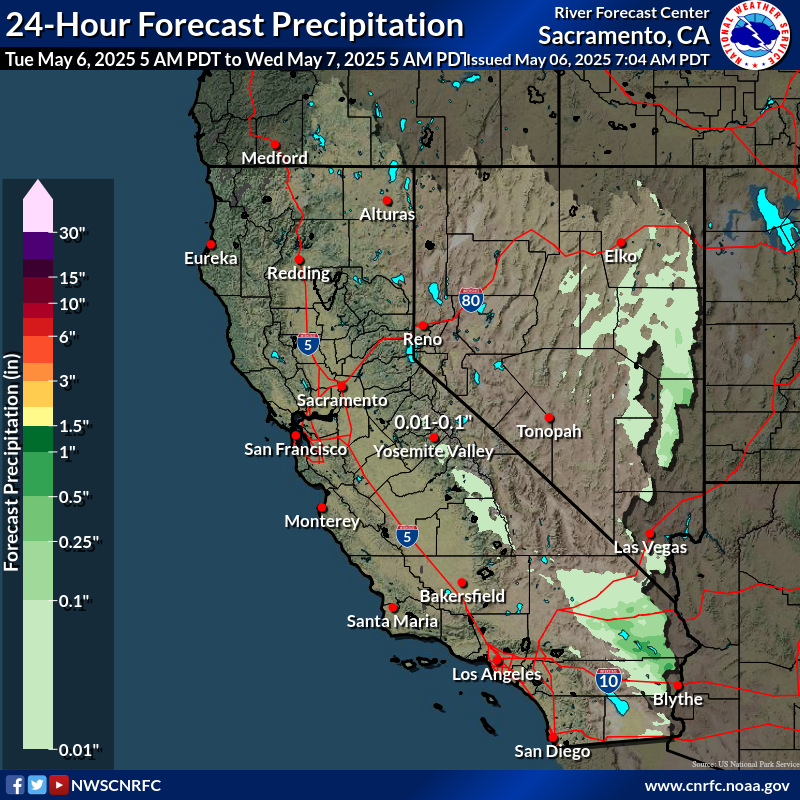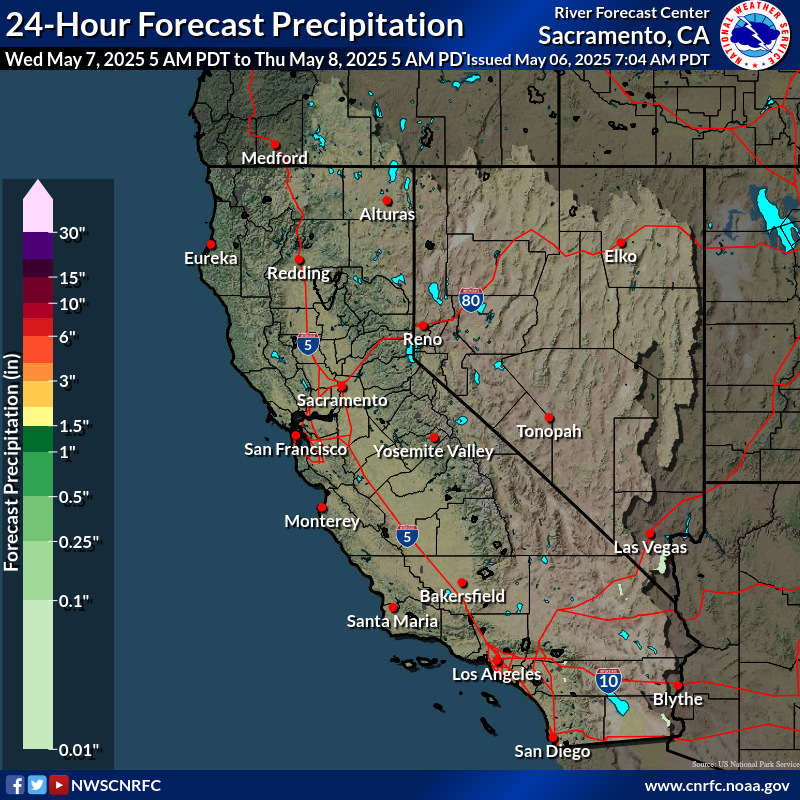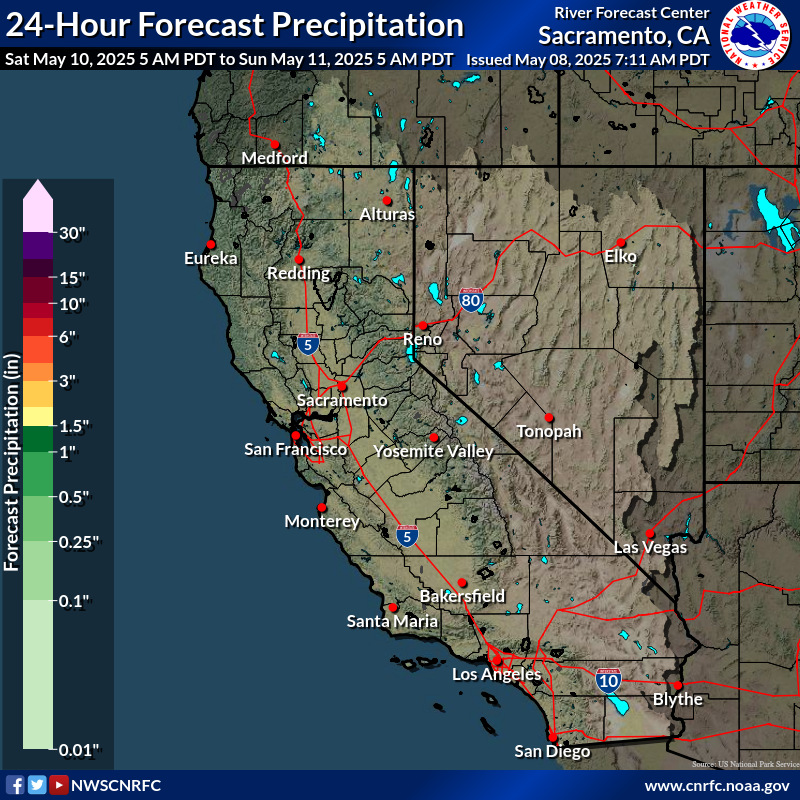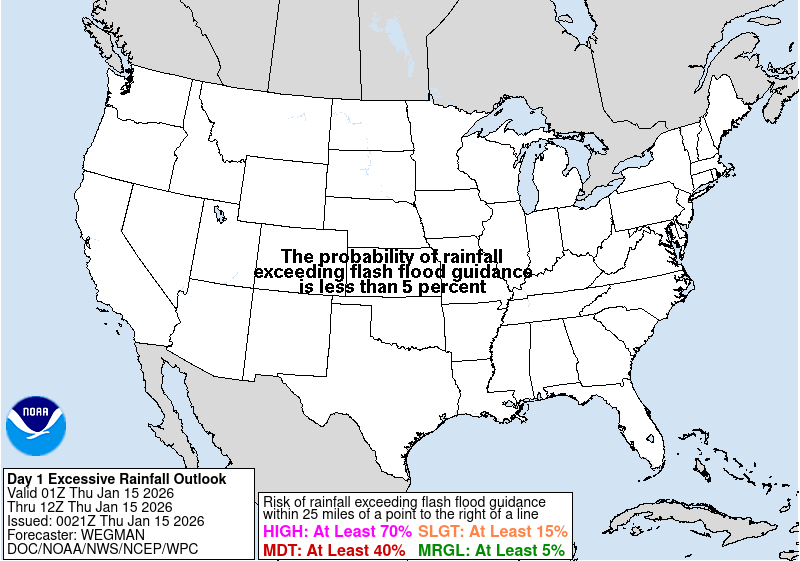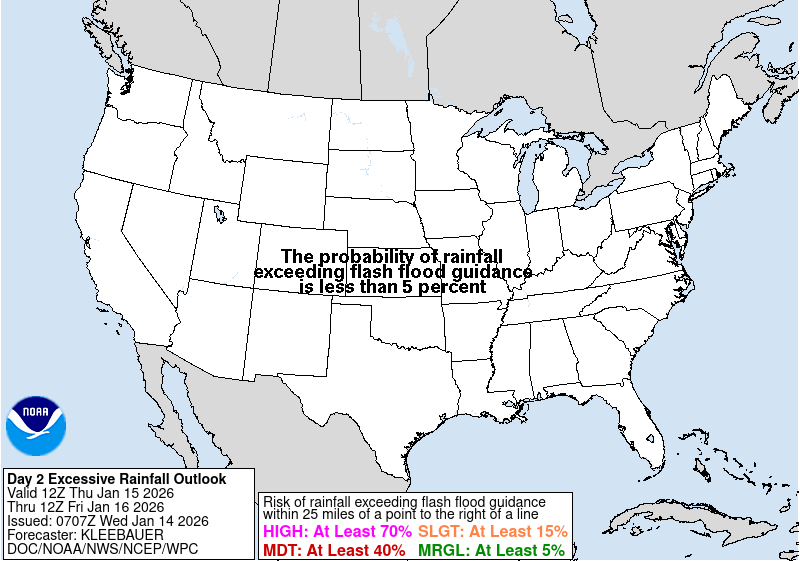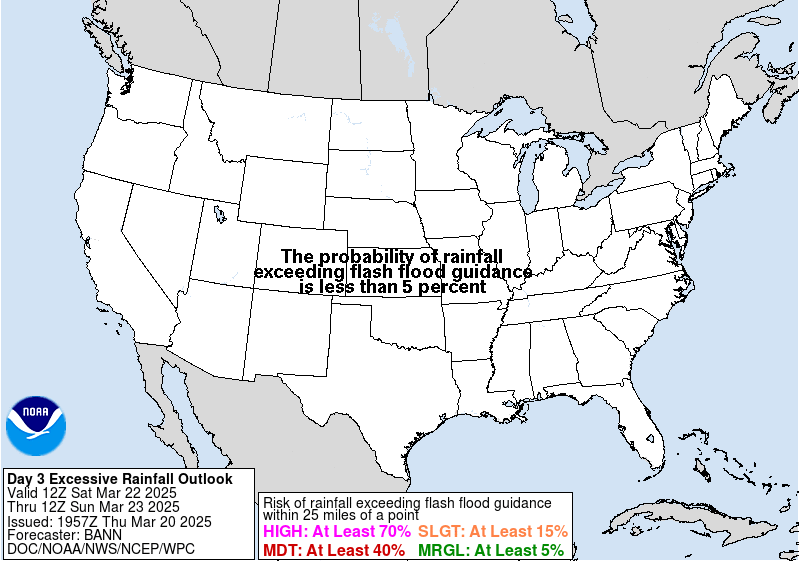
This Quick Links page provides a collection reference and resource links for situational awareness around atmospheric river events. While the focus is on California, many of the links also have applicability to other US regions impacted by atmospheric rivers.
What is an Atmospheric River?
Atmospheric rivers are relatively long, narrow regions in the atmosphere – like rivers in the sky – that transport most of the water vapor outside of the tropics. These columns of vapor move with the weather, carrying an amount of water vapor roughly equivalent to the average flow of water at the mouth of the Mississippi River. When the atmospheric rivers make landfall, they often release this water vapor in the form of rain or snow. (Source: NOAA)
NOAA’s page about Atmospheric Rivers
USGS’s 6 Things to Know about Atmospheric Rivers
Short video about atmospheric rivers by the
Scripps Institution of Oceanography at UC San Diego.
Coastal Maximum AR Scale and Precipitation Maps
Past 7 Days Observed

Next 7 Days Forecast

Maps from the Center for Western Weather and Water Extremes’ Atmospheric River Scale Forecast Products page. The dots on the maps above represent the Atmospheric River (AR) scale observed and forecast at each grid point. GEFS model plots (shown above) are updated about every six hours and ECMWF model plots (available via the link) are update about every 12 hours. (Note – All model data provided courtesy of NOAA/NCEP or ECMWF. All products are considered experimental.)
Precipitation Forecasts
Additional images are available for days 3-6 and for 6 hour intervals for days 1-3 at the California Nevada River Forecast Center page.
Excessive Rainfall Outlook (Flash Flooding Potential)
High: At Least 70% Moderate: At Least 40% Slight: At Least 15% Marginal: At Least 5%
In the Excessive Rainfall Outlooks, the Weather Prediction Center (WPC) forecasts the probability that rainfall will exceed flash flood guidance (FFG) within 40 kilometers (25 miles) of a point.
High: Severe, widespread flash flooding. Areas that don’t normally experience flash flooding, could. Lives and property in greater danger.
Moderate: Numerous flash flooding events with significant events possible. Many streams may flood, potentially affecting larger rivers.
Slight: Mainly localized. Most vulnerable are urban areas, roads, small streams and washes. Isolated significant flash flooding possible.
Marginal: Localized and primarily affecting places that can experience rapid runoff with heavy rainfall.
You can access downloadable shape and KML files on the NOAA Weather Prediction Page for Excessive Rainfall
Flood Outlook
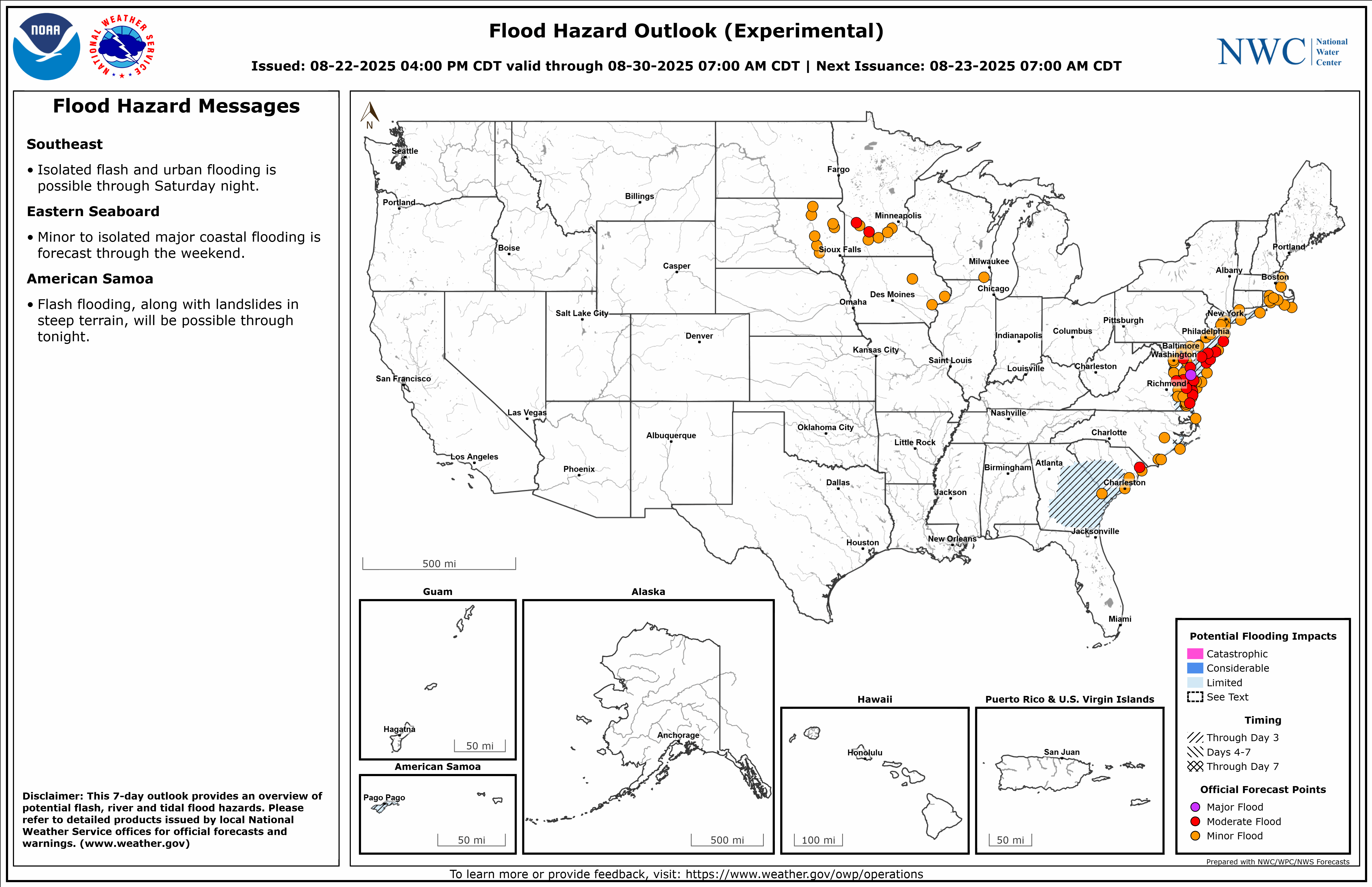
An interactive map that includes 1-3 Day, 4-7 Day, and 1-7 Day flood hazard outlooks is available at the National Weather Service Experimental: Flood Hazard Outlook Product
River Flooding Outlook
California Nevada River Forecast Center
In addition to providing current and forecast information on the larger rivers and creeks in California, GIS files are also available for download (links under the map)
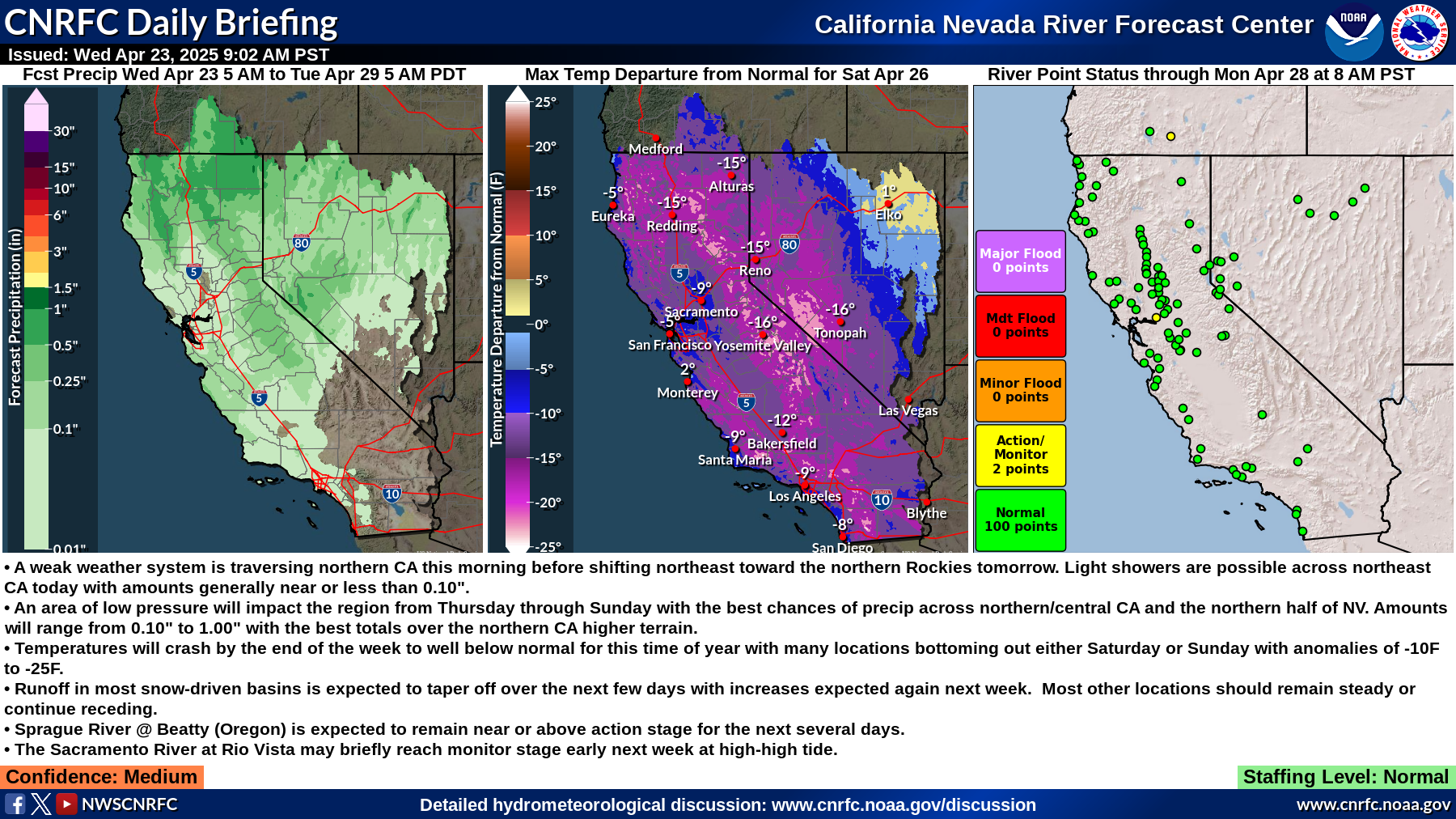
Flood Risk Maps
National Flood Hazard Layer – This is a geospatial database that contains current effective flood hazard data. FEMA provides the flood hazard data to support the National Flood Insurance Program. You can use the information to better understand your level of flood risk and type of flooding.
FEMA Flood Map Service Center – enter address to get flood map for a specific area
Preliminary FEMA Map Products – Preliminary flood hazard data (preliminary data) provide the public an early look at their home or community‘s projected risk to flood hazards. Preliminary data may include: new or revised Flood Insurance Rate Maps (FIRM), Flood Insurance Study (FIS) reports, and FIRM Databases.
California Best Available Maps – These maps display 100- and 200-year floodplains for areas located within the Sacramento-San Joaquin (SAC-SJ) Valley watershed.
Levee Flood Protection Zone Maps: These maps developed by the State of California Department of Water Resources, estimate the maximum area that may be flooded if a State-Federal levee fails with flows at maximum capacity that may reasonably be conveyed. These maps specifically focus on flood risks associated with State-Federal levees.
Atmospheric River 1-2 Week Outlook
Week 1

Week 2
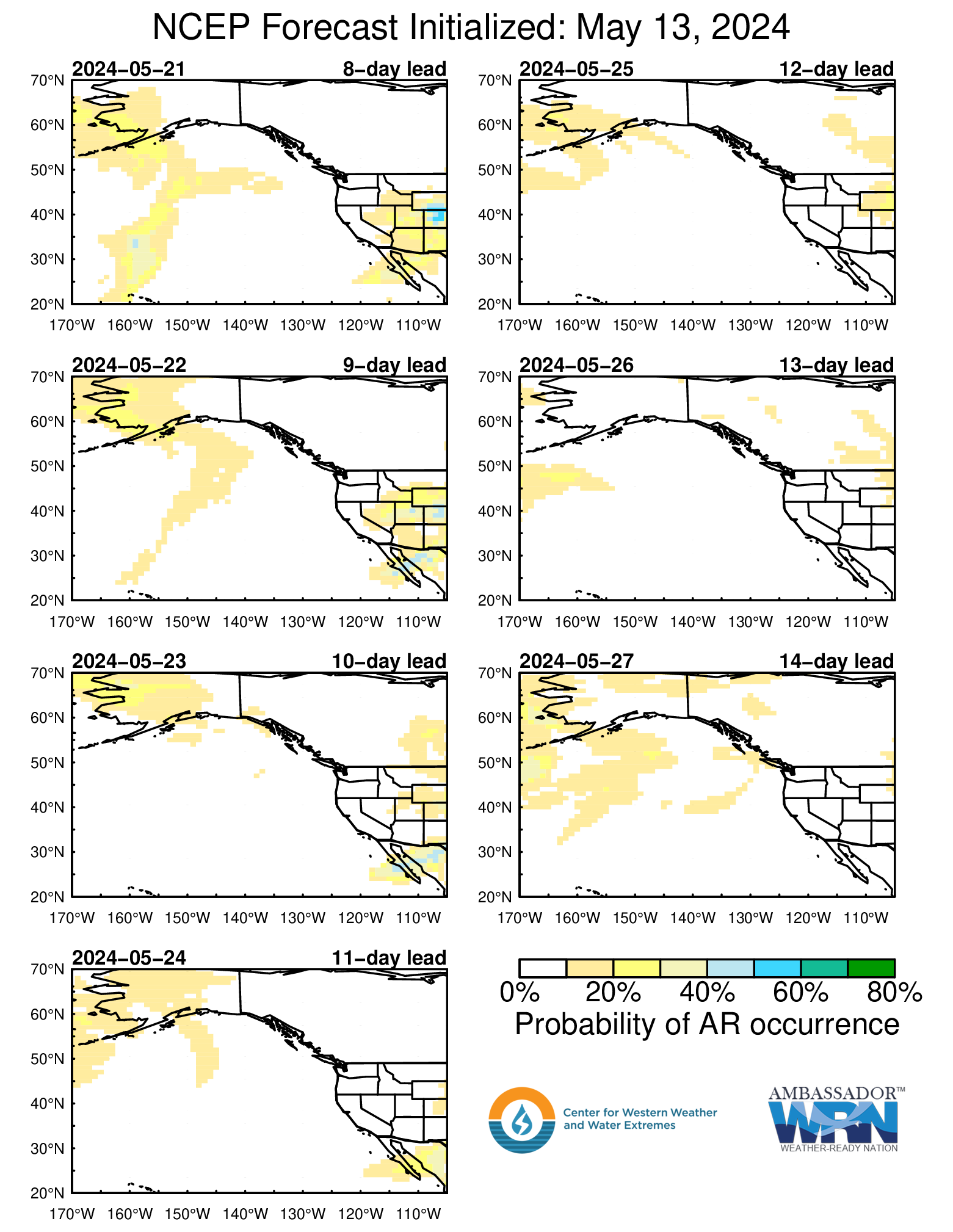
Additional information on the sub seasonal forecast along with a seasonal forecast are available on the Center for Western Weather and Water Extremes’ Subseasonal to Seasonal (S2S) Experimental Forecasts page.
GIS Resource Links
River Forecasts
California Nevada River Forecast Center: Download buttons for KML and XML river forecast data files are under the main map. KML and shape files are also available for overlay files such as drainage basins and recent major burn scar areas.
NOAA Advanced Hydrologic Prediction Service River Gauge Observations/Forecasts: River Gauge current stages and forecasted river stages out to 336 hours
NOAA National Significant River Flood Outlook: This Flood Outlook is intended to provide a general outlook for significant river flooding. It is not intended to depict all areas of minor flooding or small-scale events such as localized flooding and/or flash flooding.
NWS Current Weather:
Excessive Rainfall Forecast: These maps forecasts the probability that rainfall will exceed flash flood guidance (FFG) within 40 kilometers (25 miles) of a point. KML and Shapefile download links are in the left hand column.
National Weather Forecast Chart: The WPC National Forecast Charts provide an overview of expected weather for up to the next three days, with emphasis on certain hazardous and significant weather. They summarize forecasts from several NCEP Service Centers including the Storm Prediction Center (for severe thunderstorm and tornado outlooks), the National Hurricane Center (for tropical storm and hurricane forecasts), and the Weather Prediction Center (for information concerning heavy rainfall, flooding, winter weather, and general weather). With overlaid frontal forecasts, these displays serve as a good overview of the expected weather for the next three days.
Probabilistic Winter Precipitation from WPC: These graphics indicate the probability (potential) for a location to receive specific thresholds of accumulated snow or ice. Snowfall – shapes represent the probability (slight, moderate, and high) that enclosed areas will receive equal to or greater than a specific threshold accumulation (4″, 8″ or 12″) of snowfall in a 24 hour period. Ice – shapes represent the probability (slight, moderate, and high) that enclosed areas will recieve equal to or greater than 0.25 inch of ice accumulation.
NWS Local Storm Reports: Local Storm Reports (LSRs) from all NWS Weather Forecast Offices for 24 hour, 48 hour and 72 hour time periods. More information on LSR format may be found in Section 5 of NWS Instruction 10-517. This data is updated every five minutes.
NOAA Climate Outlooks:
Precipitation and Temperature Outlooks for 6 to 10 Day and 8 to 14 Day

